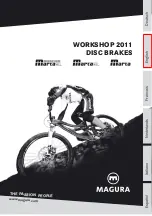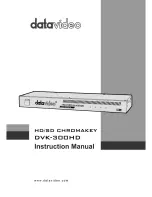
THE PASSION PEOPLE
www.magura.com
13
2.
Remove the brake pad fitting screw with a 2 mm allen key.
3.
Pull out the brake pads. Clean the pads with a dry rag that is free of oil and
grease.
Never push back the pistons without the brake pads mounted!
Never squeeze the lever blade without the brake pads in place and the wheel
mounted! If this happened by accident push back the pistons with mounted brake
pads by using the transport device or a flat blade screwdriver.
Use only genuine MAGURA brake pads! MAGURA cannot guarantee a correct
function of the brake if you use brake pads from other manufacturers, which were
not tested. Using other pads might cause poor braking and serious injury! All warran-
ty claims will be void in case of misuse!
4.
Clean on the occasion of the brake pad change the brake body with a clean rag.
5.
Mount the new brake pads. Make sure that the friction side of the new brake pads
points towards the rotor
Tightening torque of the fitting screw: 1 Nm/ 9 in.lbs. Check
after installation the correct fitting of the pads by pulling them.
6.
Check, whether the pistons are fully pushed back and whether the pads are flush
with the caliper body. Push the brake pads back with the transport device or a flat blade
screwdriver as described on page 12. Re-install the wheel and check for a correctly tighte-
ned quick release skewer of the wheel
that should be mounted on the opposite side of
the caliper.
7.
Squeeze the lever blade several times (pump) to push the pads to their proper positi-
on until the lever feel becomes very firm.
New brakes and/or new rotors or brake pads must always be run in by braking
at least 30 times from a speed of 30 km/h to achieve the maximum brake power.
Take your bike to a safe place to run in the brake.
Never contaminate brake pads with oil or grease this causing permanent loss of
brake power! Contaminated pads are definitely killed and must be replaced!










































